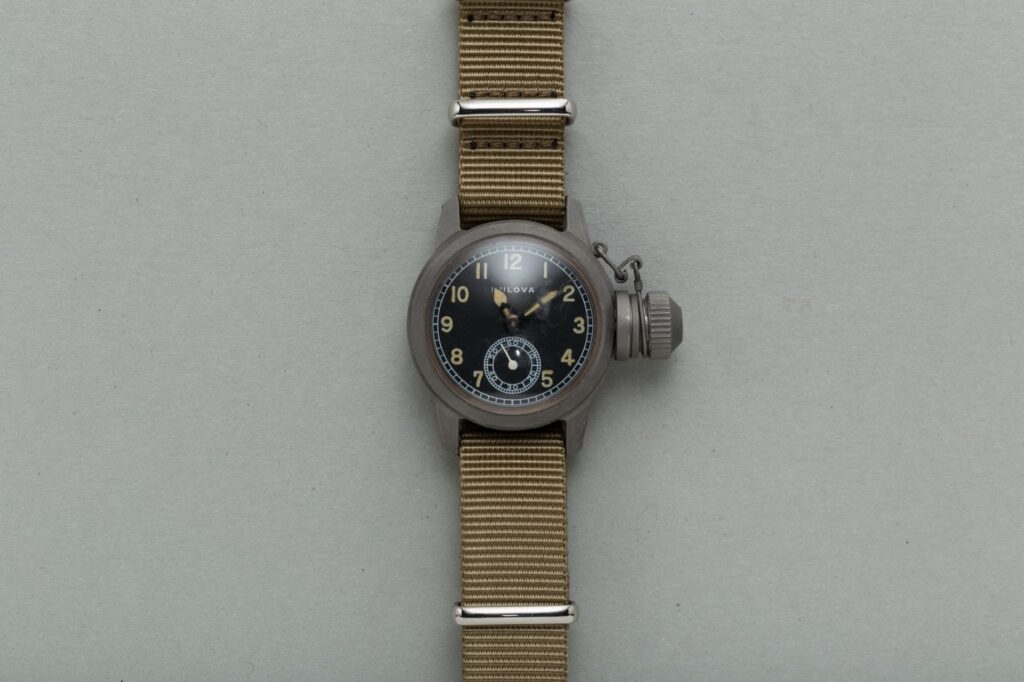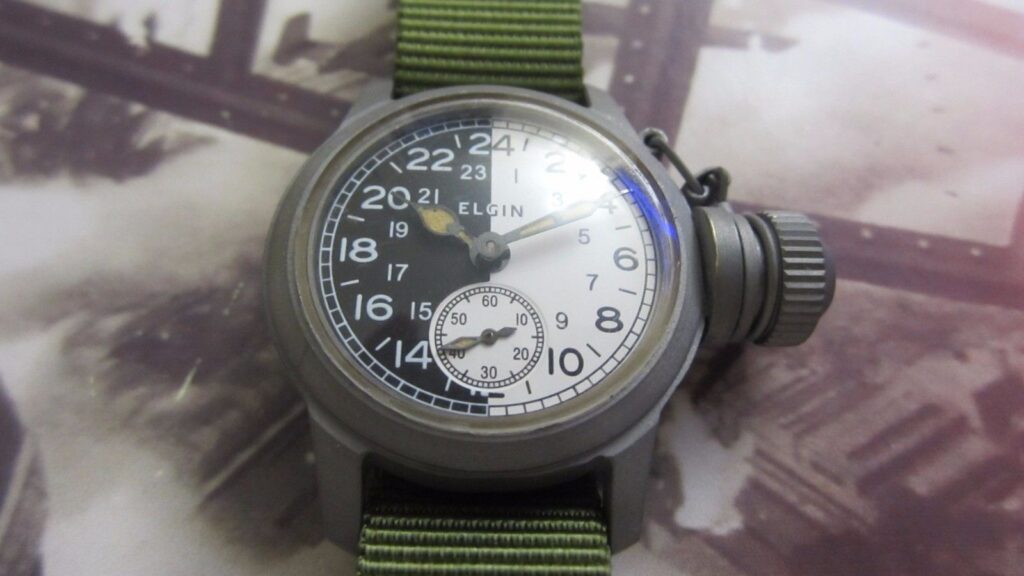Born of War: The Canteen Watch

You may not be able to take a sip from them, considering their water-tight structure, but Canteen style watches draw from a well of history that is certainly brimming. Well below the surface of the sea, Navy divers during WWII required tough timepieces to weather demolition missions—as well as other deep-water endeavors. Up until the second Great War wristwatches had been so new to horology that their toughened performance qualities had not been fully realized in the way they are today. There were two exceptions to this at the time regarding water resistance—brands Panerai and Radiomir. Despite these two exceptions the U.S. Government needed watches that would hold up to submersion and be manufactured en-masse. So they put out a contract, and the first water-ready Canteen watches started pouring in.
Entering the Field
The three brands that took on making water-use watches for the US Navy were Elgin, Hamilton, and Bulova. Already standing as prominent watchmakers before the 1940s, each had the resources to supply soldiers with this crucial ordinance. Predating rotating bezels and underwater chronographs, the Canteen watches issued were very basic timepieces and looked similar to infantry watches built for the US Army. However, the large hatch on the watches set them apart in terms of design. Hatch in tow—naval soldiers could carry out orders with uninterrupted underwater timekeeping. With the new technology of SCUBA (self-contained underwater breathing apparatus) making its way into the fray, it almost goes without saying that tracking time was crucial is keeping military men from being down for too long. Unfortunately, the evolution of SCUBA began pushing Canteen watches out of the running as military watches—due to the fact that they couldn’t go further down than about 49 feet at a time (more on that soon).
Further specifics being accounted for, the WWII Canteen watches were built for one particular segment of the US Navy. Their specific patron/designation was the US Navy Bureau of Ships. When observed older Canteen watches will not have “Canteen” inscribed anywhere on their case or dial. They will instead read “USN Buships”, alongside the brand that built them. Because of this designation older Canteen watches from WWII can be referred to as “BuShip” or “Canteen” interchangeably.
Beyond the Canteen

Once WWII was over the watch world continued to move on. Limited commercial production on Canteen watches fizzled out due to new innovations in water resistance. As SCUBA tech was becoming more widespread, deeper-diving watches were being crafted by watchmakers around the globe. By 1961 the US Military needed Special Forces watches that were non-magnetic and could dive down to 400 feet. They called this specification “22717A”. Watches that met this updated specification came from private industries. Instead of issuing new contracts, the government began buying them in bulk from innovative private sellers.
Canteen Legacy
Many WWII watches have survived, despite their abuse, because of the specifications they were built to. The Canteen is no exception. Though WWII water-watches didn’t debut any major updates or innovations to wristwatch design, they were at the forefront of new ideas in engineering. Essentially, they were built tougher than anything before. Perhaps not surprisingly, they often outrank newer timepieces in terms of longevity and durability. It would be fair to say that modern performance watches owe a lot of their standards to timepieces like the Canteen, as well as all of its military cousins. After all, if it can dive in the sea or take on the rigors of war—and keep on ticking—the watch has gotta be worth its salt.
A final note: Canteen watches can still be purchased today. Though they weren’t commercially popular after WWII their unique style is still contemporarily reproduced. So if you want a standout piece that’s a nod to history, search around for a Canteen watch. Just be sure to check the water-resistance before taking it for a dive—some are made simply for looks.
Times Ticking has been in operation for more than 30 years, since 1982. We have performed watch repair for customers both locally and internationally. If it Ticks! We KNOW it! Our team of watch repair technicians have a combined experience in watchmaking of over 120 years.

